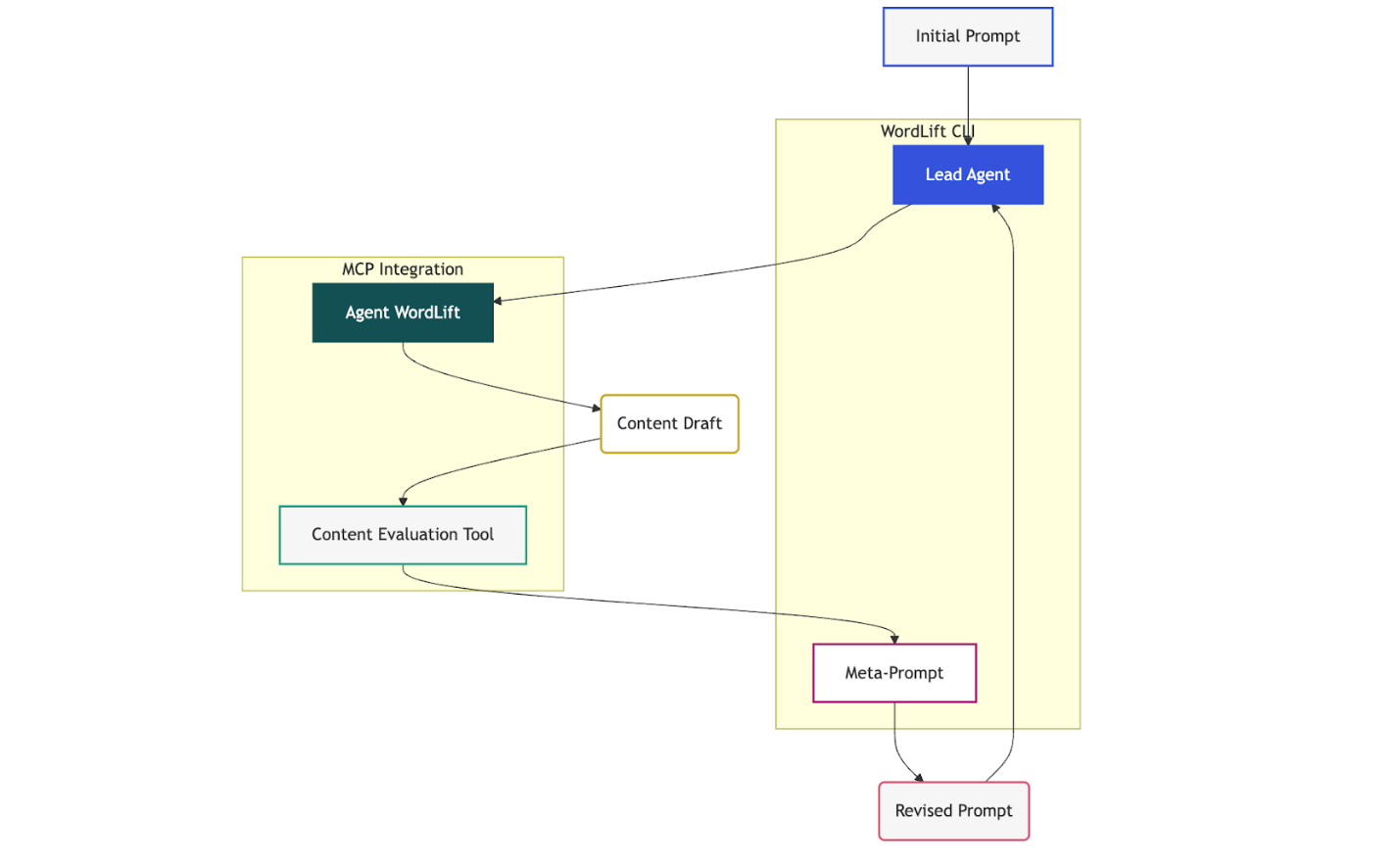Prompt Learning for Content Optimization
Streamline content creation with prompt learning: a scalable way to generate high-quality, aligned content without endless trial and error.
“The hottest new programming language is English” – Andrej Karpathy
A New Philosophy for Interacting with LLMs
Creating optimized content typically involves a frustrating cycle: write a prompt, review AI output, manually adjust, and repeat. This process doesn’t scale and rarely produces consistently high-quality results aligned with marketing goals.
What Is Prompt Learning?
Prompt learning represents a fundamental shift in how we interact with large language models. Instead of static prompts, it uses natural language critiques to continuously refine content generation—similar to how humans learn from feedback and adjust their approach.
Research from companies like Arize-ai has demonstrated the benefits of this approach, achieving single-loop accuracy gains of up to 84% on complex logical tasks.
The process works in three steps:
- Generate: AI creates initial content from a basic prompt.
- Evaluate: The content is assessed against specific criteria using both objective metrics (keyword density, readability) and subjective analysis via “LLM-as-a-Judge”.
- Optimize: Feedback automatically rewrites the original prompt to address identified weaknesses.
This creates a dynamic loop where each iteration produces progressively better content.
Defining Your Success Signals
The key to effective prompt learning lies in defining the right evaluation criteria. At WordLift, we use our content evaluation framework which combines SEO metrics with readability scores. However, you could equally configure Agent WordLift to optimize based on:
- Traffic patterns from specific authors.
- Performance data from particular blog sections.
- Engagement metrics for targeted audiences.
- Conversion rates for specific content types.
The flexibility to define custom success signals makes prompt learning adaptable to any marketing goal.
Real-World Example: Autonomous Content Creation
We tested this approach with a simple goal: create a high-quality definition of “neuro-symbolic AI” scoring at least 65 points.
Using our wordlift-cli (a command-line interface for Agent WordLift), we issued one command:
wordlift-cli -p "search content on neuro-symbolic AI, evaluate the generation using agent wordlift and continue iterating until you reach 65, then store it as neuro-symbolic-definition.md"The Results:
Initial score: 52.7
Final score: 68.0 (target exceeded)
Process: Fully autonomous—no manual intervention required
The system orchestrated multiple agents through Model Context Protocol (MCP)—a standardized way for AI systems to collaborate and share context. Gemini-2.5-pro managed the overall workflow while Agent WordLift handled specialized SEO tasks, iterating until the goal was met.

Why This Matters for Your Content Strategy
Prompt learning shifts content creation from:
Manual prompting → Goal-driven objectives
Static instructions → Evolutionary improvement
Single-agent limitations → Specialized multi-agent collaboration
Implementation Options
DIY Approach: You can implement prompt learning using any LLM with evaluation frameworks like DSPy or custom feedback loops.
WordLift Solution: We’ve streamlined this entire process through Model Context Protocol (MCP). Agent WordLift provides:
- Built-in content evaluation with SEO-specific metrics.
- Automated feedback loops with customizable success signals.
- Multi-agent orchestration via wordlift-cli and MCP.
- One-command execution of complex optimization workflows.
Get Started
Ready to try prompt learning?
- Experiment with Agent WordLift: Test the evaluation and feedback tools.
- Install wordlift-cli: Run your first optimization cycle using our documentation.
- Share feedback: Help us improve as we build the future of AI-driven content.
The technique works with any AI system, but WordLift makes it effortless to implement and scale for your content strategy.
Unlock the full potential of AI-driven content: install wordlift-cli, run your first prompt learning cycle, and start optimizing at scale today. Want a demo? Book a meeting with our team to see it in action.